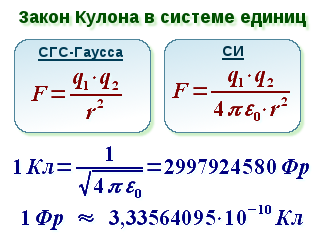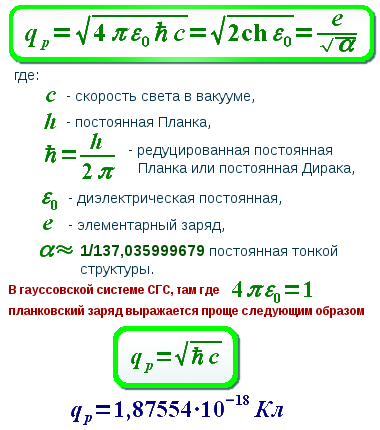A sign that the body has electric charge, is its interaction with other bodies. This was discussed in the previous paragraph. But such interaction in everyone special case the intensity may vary. This gives grounds to assert that the property of a body, called electric charge, can have a quantitative measure.
Term "electric charge" often used simply to mean “a body having an electric charge.”
The quantitative measure of electric charge was first called amount of electricity. But over time, this measure was simply called electric charge . So, if they talk about the value of an electric charge, then they mean a quantitative measure of the property of a body - electric charge.
Electric charge is a property of the body that manifests itself in interaction with an electromagnetic field. Electric charge is also a measure of the properties of a body that has an electric charge.
The charge value of an extended body is denoted by the letter Q. If we are talking about the charge of a point body, then it is denoted by a small letter q.
To measure electric charge, special instruments are used. One of these devices is electrometer.
The main part of the electrometer is a metal rod fixed in a metal case using a sleeve made of a non-conducting substance (Fig. 4.4). At the bottom of the rod there is a light metal pointer that can rotate on a horizontal axis. The arrow's axis passes slightly above its center of mass. Under the influence of gravity alone, the arrow will normally be in a vertical position. Material from the site
If the upper end of the rod is touched by a charged metal ball, the rod and arrow will receive an electrical charge. Due to the interaction of the similarly charged rod and arrow, a force will arise that will turn the arrow to a certain angle. It has been experimentally established that the angle of deflection of the arrow will depend on the value of the charge on the rod and arrow. Thus, by measuring the angle of deflection of the arrow, we can draw a conclusion about the value of the electric charge. To prevent other bodies from influencing the arrow, the metal body must be connected to the ground.
In technology and scientific research, more complex and more sensitive instruments are used to measure electrical charges, which are called coulomb meters(Fig. 4.5). These are, as a rule, electronic devices, the operating principle of which is based on the phenomenon of changing the parameters of some elements of electronic systems when an electric charge is imparted to them.
Questions about this material:
One of the basic physical quantities that is directly related to electricity and in particular to electrical engineering is electric charge. We are accustomed to the fact that in electrical engineering charge is measured in pendants, but few people know that there are other units of measurement of electric charge. When calculating electrical circuits and using electrical measuring instruments, the international system of SI units is used. But did you know that there are other measurement systems?
Pendant
This unit of measurement of charge has been known to many since school. It refers, as you already understood, to the SI system of units. This is a derived quantity that is not basic in the SI system. It is derived from other quantities and determined by other quantities.
The unit of measurement is named after the scientist - Charles de Augustin Coulomb, who discovered the law of interaction of charges, and accordingly, the electric charge. The amount of charge is abbreviated as letters Cl, and when it comes to the amount of charge, they write it with in capital letters - pendant .
The definition of electric charge in the SI system is as follows:
An electric charge of one coulomb is a charge that passes through a cross-section of a conductor at a current of one ampere in a time equal to one second.
There is a relationship between charge and the unit per ampere hour. One coulomb of electricity is equal to 1/3600 ampere hour.
Franklin
Another unit and measurement of charge, which is named after the American inventor and physicist - Benjamin Franklin. His portrait can be seen on the US one hundred dollar bill. This unit belongs to the SGSE system of units, in which the basic units are centimeter, gram and second. This system of units is otherwise called the absolute system of physical units and it was widely used before the adoption of the SI system (adopted in 1960).
The unit of measurement is abbreviated as Fr(Russian) or Fr(English).
The definition of electric charge in the SGSE system is as follows:
The amount of electric charge in one Franklin is such an amount of charge that two opposite charges of one Franklin, located in a vacuum at a distance of one centimeter, will attract each other with a force of one dyne.
As can be seen from the definition, it differs from that given for the SI system. The difference is primarily that in the SI system the charge is expressed in terms of current strength and is determined based on this, but in the SGSE system the charge is expressed in terms of .
The SGSE system is convenient for calculations and research in physics, and the SI system is more convenient for the practical needs of electrical engineering.
Coulomb's law, which is directly related to charges, is written differently in the SI and SGS (SGSE) systems. Unit of charge in 1 Cl can be translated into 1 Fr and vice versa.

There is also the Planck system of natural units of measurement and it also contains electric charge. This system was first proposed by a German physicist Max Planck 1899 based on the speed of light and the gravitational constant and two more constants he introduced.
Designated q p. A basic unit of measurement that is defined in terms of fundamental constants. Defined as follows:

All bodies consist of indivisible tiny particles called elementary. They have mass and are able to attract each other. In law universal gravity, decreases relatively slowly with increasing distance between particles (it is inversely proportional to the square of the distance). The force of interaction between particles exceeds this interaction and is called “electric charge”, and the particles are called charged.
The interaction of particles is called electromagnetic. It is typical for the majority elementary particles. If there is no charge between them, then they say there is no charge.
Electric charge determines the degree of intensity. It is the most important characteristic elementary particles, which determines their behavior. Denoted by the letters "q" or "Q".
There is no macroscopic standard for a unit of electric charge, since it is not possible to create one due to its inevitable leakage. In atomic physics, the charge of an electron is taken as a unit. IN International system units it is established using A charge of 1 coulomb (1 C) means that it passes at a current of 1 A in 1 s through This is a fairly high charge. It is impossible to communicate this to a small body. But in a neutral conductor it is quite possible to set a charge of 1 C in motion.
Electric charge is a scalar physical quantity that characterizes the ability of particles or bodies to enter into electromagnetic force interaction between themselves.
When studying interaction, the concept of a point charge is important. It is a charged body, the dimensions of which are much less than the distance from it to the point of observation or other charged particles. When two interact point charges the distance between them is much greater than their linear dimensions.
Particles have opposite charges: protons are positive, electrons are negative. These signs (plus and minus) reflect the ability of particles to attract (with different signs) and push off (at one). In nature, positive and negative indicators are compensated for each other.
The modulus is the same, regardless of whether it is positive, like a proton, or negative, like an electron. The minimum charge is called elementary. All charged particles have it. It is impossible to separate part of the particle's charge. The minimum value is determined experimentally.
Electric charge and its properties can be measured using an electrometer. It consists of an arrow rotating around a horizontal axis and a metal rod. If you touch the rod with a positively charged stick, the arrow will deviate at a certain angle. This is explained by the distribution of charge along the arrow and the rod. The rotation of the arrow is due to the action of the repulsion force. As the charge increases, the angle of deviation from the vertical also increases. That is, it shows the value of the charge that is transferred to the electrometer rod.
The following properties of electric charge are distinguished. They can be positive and negative (the choice of names is random), which attract and repel. Charges can be transferred upon contact from one body to another. One body under different conditions can have different charges. Important property is discreteness, which means the existence of the smallest, universal charge, which is a multiple of similar indicators of any bodies. Inside closed system the algebraic sum of all charges remains constant. In nature, charges of the same sign do not appear and disappear at the same time.
